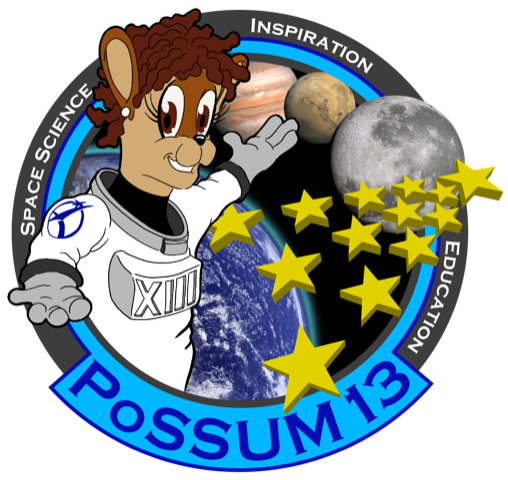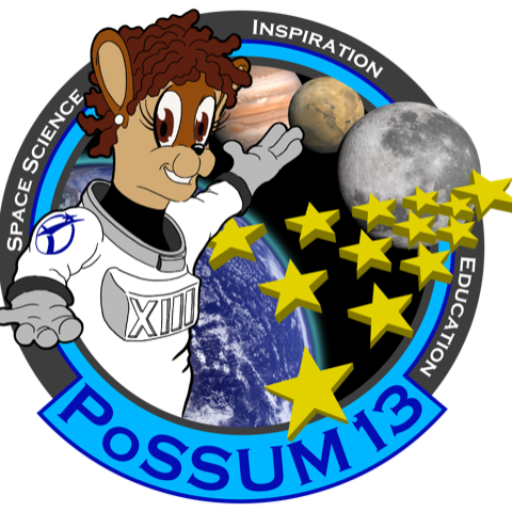Named "B"; belonged to the first female group, which was not accepted from the NASA. Bernice Steadman was a veteran of many Air Races and began flying at an early age, earning her Private Pilot's License at age 17, and her Commercial Pilot's License in 1946. She founded and operated her own flight school, charter service and Fixed Base Operations at Bishop Airport in Flint, Michigan. She held an Airline Transport Pilot license and taught Reserve Air Force pilots after WWII. She was inducted into the Michigan Aviation Hall of Fame in October of 2002 and the Michigan Women's Hall of Fame in 2003. In 2007 she was honored by presentation of a Doctor of Science Degree by the University of Wisconsin, Oshkosh. 1, 2
Gene Nora heard about the research program going on at the Lovelace Clinic in Albuquerque while serving on the faculty at the University of Oklahoma. She wrote a letter to Dr. Lovelace outlining her aviation and educational background, asking to be accepted. Lovelace wrote back "come on". She and Janey Hart, who came in the same way and was an inspirational partner, were the 24th and 25th women to undergo the physical exams. Though Gene Nora (pronounced Janora) was told she passed the tests, she never met Dr. Lovelace, nor was she told that she was in an astronaut training program, and so always considered it research.
Irene was 34 and single when she was solicited by Dr. Lovelace. A strong willed woman of German descent, her first aviation experience was as a child in Chicago. She and her Mother would go to a local park to partake of parachute rides! Wanting to pursue aviation, and more so, to fly fighters, she attempted to join the WASP when she was 17 by using a fake logbook and older friends birth certificate. These women admired the WASP greatly and at the time that was the best flying a woman could do. Unfortunately, it didn't work out. It didn't stop her though, as by 1961 when she received her call, she held a Commercial Pilot's license, with airplane single and multi-engine land ratings, instrument ratings, and airplane single engine sea ratings - and built up more than 9,000 hours - far more than any Mercury 7 astronaut.
Wife of the US Senator from Michigan, Philip Hart, and the daughter of Walter Briggs, millionaire owner of the Detroit Tigers. One of the group of women who went to the Lovelace Clinic in Albuquerque, New Mexico in 1961 and underwent the same medical and psychological tests that the Mercury 7 astronauts had completed. She was one of the Mercury 13 finalists, considered qualified by Dr. Lovelace for astronaut training. Hart earned her first pilot's license during World War II, and later became the first licensed female helicopter pilot in Michigan. In the early 1960s, Hart was chosen to participate in the Lovelace Foundation's Woman in Space Program, a privately funded project designed to test women pilots for astronaut fitness by subjecting them to the same physical tests developed by NASA for astronauts.
Jan Dietrich was a pilot and member of the Mercury 13 Astronaut Training Program. The Dietrich twins, high flying queens of the sky who are in training at Oakland Airport for the 2400-mile women"s transcontinental air race starting Aug. 15 from Santa Ana. The twins, ex-University of California aces. they are sponsored by the Taloa Academy of Aeronautics and the San Mateo Chamber of Commerce. 7-23-57. * At the dawn of the space race in the early 1960s, Bay Area pilot Janet Christine Dietrich was one of 13 women who underwent secret astronaut testing, passing the same rigorous physical and psychological assessments as the men who became immortalized as America's first astronauts.
Another WASP, Jean Hixson of Akron, later became the second woman to break the sound barrier, which she did over Lake Erie. But Hixson wanted to go even higher -- and so she became part of another experiment: Project Mercury, which tested 13 American women to become the first astronauts, reasoning that women, who are generally smaller and eat less than men, would make the most efficient astronauts. Although Hixson passed every test required -- and was determined to be the best of the group -- NASA decided it would go against the "social order" of the time to send women into space first. Although Hixson never made it to space, she certainly blazed a trail for those who did. 1, 2
Jerri T. was first exposed to flying at the age of 4, when she sat in the cockpit of an airplane that flew her father to a business meeting in Texas. The bug bit, bit hard and never let go - and she let her father know she loved flying. However, her father's advice was reflective of the era: "Work hard, do well in school and you can grow up to be an air hostess and fly all the time". Jerri, of course, protested saying she wanted to be a PILOT! Her father did his best to explain the facts of life in that era, "Honey, girls just don't fly airplanes, that's MENS work". Well, if you know Jerri, standards of an era like that are a minor inconvenience, at best. When she was 15, she began taking flying lessons after school without the knowledge of her parents. She was determined and wasn't about to let antiquated thinking deter her. Unfortunately she was caught - her Mother was APPALLED! And Jeri was sent off to a Catholic school in San Antonio It never diminished her desire though, nor changed her mind. It was simply a speed bump in the airway of life and pretty soon she would be past that bump.
Cobb is the daughter of Lt. Col. William H. Cobb and Helena Butler Stone Cobb. As a child growing up in Oklahoma, Cobb took to aviation at an early age, with her pilot father's encouragement. Cobb first flew in an aircraft at age twelve, in her father's open cockpit 1936 Waco biplane. At 16, she was barnstorming around the Great Plains in a Piper J-3 Cub, dropping leaflets over little towns announcing the arrival of circuses. Sleeping under the Cub's wing at night helped scrape together money for fuel to practice her flying by giving rides. By the age of 17, while a student at Oklahoma City Classen High School, Cobb had earned her private pilot's license. She received her commercial pilots license a year later. In 1948, Cobb attended Oklahoma College for Women for a year. By age 19, Cobb was teaching men to fly. At 21, she was delivering military fighters and four-engine bombers to foreign Air Forces worldwide.
<p style="text-align:justify">American pilot, one of the Mercury 13 female pilots declared fit for astronaut duty in 1961, but never entered training.Status: Deceased. Born: 1926. Died: 1974-12-01. Birth Place: San Francisco, California. Degrees in mathematics and psychology from the University of California, Berkley, 1949. Jan and Marion Dietrich were identical twins, 34 years old when they received notification from the Lovelace Clinic that they had passed the screening tests for astronaut training. They graduated together from the University of California, Berkley in 1949. Marion worked for a time as a newspaper reporter for the Oakland Tribune, flying supersonic as a passenger in a fighter aircraft on a story assignment. She became a pilot as well, flying charter and ferry flights. By the time she went to the Lovelace Clinic for her astronaut medical screening, she had 1500 hours of flying time. Astronaut 1960 to 2001. One of the group of women who went to the Lovelace Clinic in Albuquerque, New Mexico in 1961 and underwent the same medical and psychological tests that the Mercury 7 astronauts had completed. She was one of the Mercury 13 finalists, considered qualified by Dr. Lovelace for astronaut training. Died of cancer.
<p style="text-align:justify">Cagle was born on June 3, 1925 in South Carolina and the family home was in Selma, North Carolina. Cagle had always wanted to fly from a young age. When she was 12, her brothers taught her to fly using the plane they owned. When she "earned her wings" at the age of 14, she was the youngest pilot in North Carolina, and at the time, may have been the youngest in the United States. She joined the high school's aeronautics class, when the school's instructor was drafted to fight in World War II, she finished out her year as the teacher. As a Flight Instructor she was nicknamed, "Captain K". Cagle earned her private pilot's license when she was nineteen. Cagle joined the Civil Air Patrol, the Ninety-Nines, and wanted to become a WASP. Cagle went on to run an airport near Raleigh and her own charter plane service. In 1950, she earned a trophy in the Powder Puff Derby. She earned her Commercial Pilots license with Airplane Single and Multi-Engine Land ratings and Instrument ratings by 1951. She was also a certified Flight Instructor, Flight Instrument Instructor and Ground Instructor.
<p style="text-align:justify">Rhea was born a farm girl in central Minnesota and has beautiful Scandinavian features. She once flew a Piper Super Cub on floats from Houston, Texas to Lake Hood in Anchorage, Alaska. Did it completely by herself, too. She also towed gliders for Cadets at the Air Force Academy, and instructed in them also. She has flown in the International Women's Air Race and in the Powder Puff Race. She possesses a Commercial Pilots License, with Airplane Single Engine and Multi Engine Land ratings, a Single Engine Sea rating, an Instrument rating is a Certified Flight Instructor Airplane and Certified Ground Instructor. She has flown all over the United States including Alaska, as well as Canada and Mexico. Shortly after the testing at Lovelace, Rhea stopped flying professionally. She is currently one of the few Parliamentarians left, and is quite in demand. She lives in Colorado.
<p style="text-align:justify">Born in Kansas City, KS, Sarah was working for AT&T as an Electrical Engineer when solicited by Lovelace for testing. She received the phone call on Saturday, and was in Albuquerque, NM at the Clinic on Monday. Educationally, she was as qualified as any Mercury 7 astronaut, with a B.S. in Mathematics, with minors in Physics and Chemistry. At 28 and single, she held a Commercial Pilots license, with Airplane Single and Multi Engine Land ratings, Single Engine Sea, Instrument, Rotor and Glider ratings. Sarah was a free spirited sort, and participated in 6 All Women Transcontinental Air Races (Powder Puff), and numerous others including the International Women's Air Race. After the testing was complete, she left AT&T and became an accountant. She now works for the IRS in Kansas, and still pokes holes in the sky for fun, in a Cessna 172.
<p style="text-align:justify">Wally Funk has been flying professionally since 1957 and she has accumulated over 19,600 hours of flying time. As a child, she was interested in mechanics and built model airplanes and ships. At the age of 14 Wally became an expert marksman, receiving the Distinguished Rifleman's Award. At the same time she represented the southwestern United States as Top Female Skier, Slalom and Downhill races in United States competition. At age 16 she entered Stephen's College in Columbia, Missouri. She graduated in 1958 with an Associate of Arts degree and rated first in her class of 24 flyers. In 1964 her work in aviation was recognized when she became the youngest woman in the history of the college to receive the Alumna Achievement Award.

